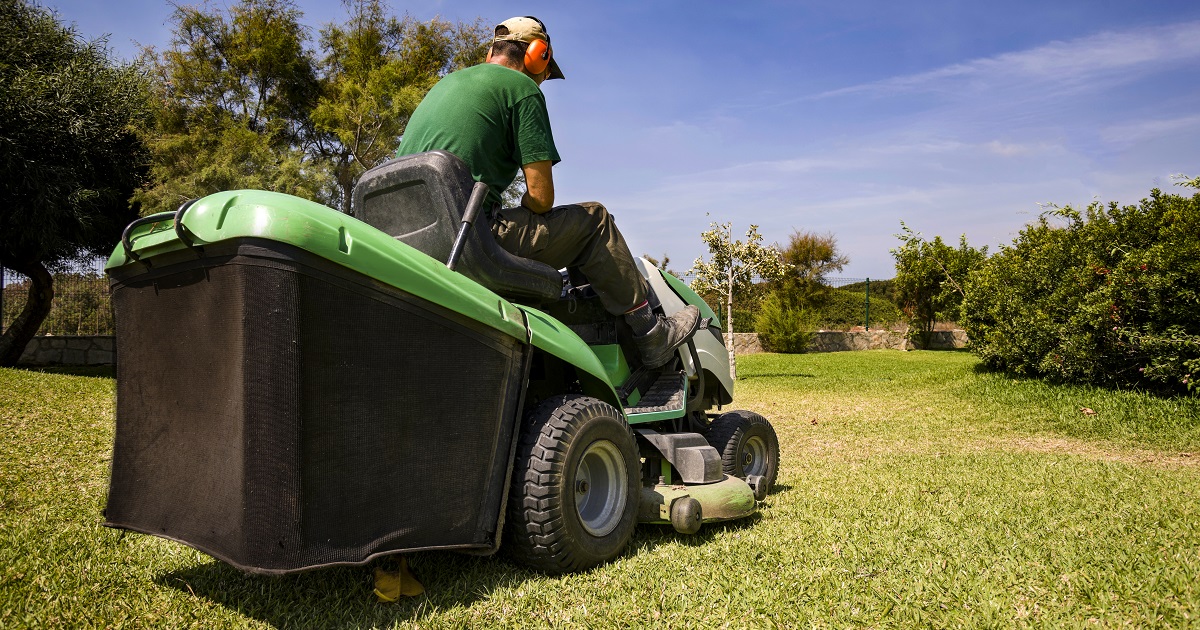For Media Inquiries
Contact Revee White, Director of Marketing and Communications at rwhite1@mem-ins.com or 573.499.4190.
As businesses across the Midwest welcome spring, many employees are hopping on lawnmowers for the first mow of the season. Mowing equipment involves serious safety risks, whether you’re a landscaping company using professional grade mowers or a small business trying to keep your grounds looking nice.
About 6,400 lawnmower injuries happen every year in the U.S., costing an average of $37,000 per patient*. An on-the-job injury resulting in a workers compensation claim will cost much more due to lost wages, decreased productivity and the claim’s impact on insurance premium.

Serious lawnmower incidents result in amputation
In 2018, Missouri Employers Mutual handled two very severe claims involving lawnmowers with standing ride-on attachments.
In one incident, the ground was wet from dew and the worker slipped while mowing a sloped area. His foot was caught in the mower blade, and later had to be amputated. The estimated claim cost is more than $820,000.
The second injury happened when a worker was operating a mower with a ride-on attachment on a 30-degree incline. He lost his balance and fell off, and his leg was caught under the mower. Because of this incident, his leg was surgically amputated from the knee down. The mower’s manual advised that it is unsafe to use the mower on inclines greater than 20 degrees. The estimated claim cost is more than $850,000.
Both policyholders experienced a significant increase in their e-mod as a result of the claim, which will impact their work comp premium. Claims like these can increase a policyholder’s e-mod by 30% or more.
Practice landscaping safety
About one in five lawnmower injuries results in amputation*, as both these devastating injuries did. In addition to permanently changing the workers’ lives, these incidents significantly impacted the companies’ loss experiences and will affect their work comp premium in the future.
In both situations, the workers operated mowers under explicitly unsafe conditions: on a wet ground and on a steep incline. This indicates a breakdown in safety training, policy enforcement or both.

Communicate the following best practices with any employees who operate lawnmowers or other landscaping machinery.
Inspect mowers and other equipment regularly
Most mowers have guards around the blade to help limit operator contact during an incident. While guards don’t always prevent injuries, having them is certainly better than not having them. Inspect equipment for proper guards. You should also check for excess vibration, unexpected noises or poor repairs. Be sure to perform inspections on a regular basis and document the results.
Do not operate equipment in dangerous environments
Follow the safety guidelines detailed in the manual for your mower or landscaping equipment. Both claims described above involved mowing on a slope. Understand the incline rules for your machine and train employees to identify slopes that are too steep. Further, empower your employees to stop work and consult a supervisor if they feel job site conditions are unsafe in any way.
Always use personal protective equipment
Using a lawnmower poses many risks. The blade could send debris flying into the operator’s eyes. The loud motor could cause permanent hearing damage. Make sure that personal protective equipment, like safety glasses and earplugs, is readily available and communicate expectations for employees to use it every time.
Mowing the grass might seem like a run-of-the-mill task for your landscaping or groundskeeping crew. But operating a machine with spinning blades shouldn’t ever be taken lightly. Conduct training with all employees, including new hires, who will be performing these duties.
For more tips and policies to improve your landscaping safety:
- Mowing and Landscaping: Lower Your Risk with Safety Strategies
- Groundskeeping Safety Tool Box Talk
- Machine Guard and Shield Safety Rules
- Maintenance/Repair Request Form
- New Hire Safety Toolkit
*Data from Incidence, Distribution, and Cost of Lawn-Mower Injuries in the United States, Johns Hopkins, September 2018